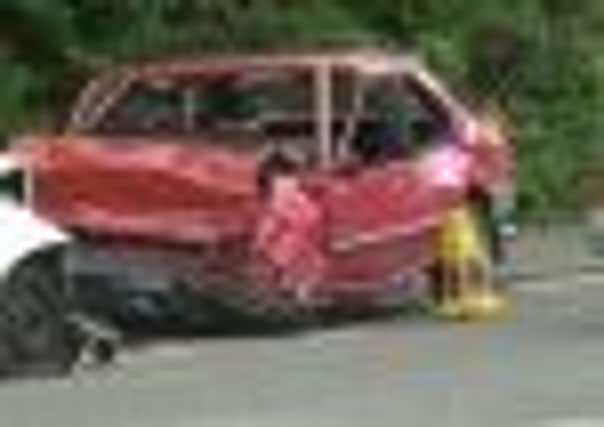Hidden toll of road crash injuries


The research showed an estimated 27,300 people were hurt last year compared with the 13,126 recorded total.
This includes some 4,000 serious injuries, more than twice as many as the reported 1,964.
Advertisement
Hide AdAdvertisement
Hide AdMotoring groups said such under-reporting could have cost life-saving road improvements, but it could now boost the case for more safety spending.
The report was published yesterday as Scottish Government statisticians confirmed provisional figures, published in June, which showed that road deaths and serious injuries last year were at their lowest since records began in 1950.
There were 208 deaths compared with 216 in 2009, which was more than a third fewer than a decade ago. The total peaked in 1970 at 815 and there was no under-counting last year.
The serious injury total fell by 14 per cent from 2,286 in 2009 and was also more than a third down on 2000.
Slight injuries were down by 11 per cent to 11,162.
Factors in the record low figures include improved car design, vehicle safety laws and measures such as traffic-calming.
The reduction has also come despite a fifth more vehicles being registered in 2010 than ten years ago, and traffic increasing by 10 per cent.
The Scottish Government’s Transport Scotland agency estimated the extent of under-counting of casualties based on official surveys and the different ways in which they were recorded by hospitals and the police.
There is no legal requirement for road injuries to be reported to the police.
Advertisement
Hide AdAdvertisement
Hide AdThe Automobile Association said the hidden figures might have hampered attempts to make roads safer.
Paul Watters, the AA’s head of roads policy, said: “With falling officially-recorded serious and minor injury casualty accidents, it is often harder for local highway authorities to target practical casualty reduction measures.
“This problem is compounded by the fact that under-recording may mean some casualty reduction schemes would have been easier to identify and argue for had the statistics about where and how people are being injured been available.
“As a result, some accident sites which could have been improved may not have been.”
Peter Rodger, head of driving standards for the Institute of Advanced Motorists, said: “Under-counting serious injuries means the cost of accidents to Scotland – the economy as a whole, the health service, and employers – is far higher than estimated.
“As well as cutting the human misery caused by road accidents, there is substantially greater economic gain to be made by tackling road safety as an investment, than previously realised.”
Kathleen Braidwood, road safety officer (Scotland) for the Royal Society for the Prevention of Accidents, said: “It has been known for many years there has been an under-reporting of road accidents. The hospital and other data help to provide a true sense of the scale of the numbers of road casualties, which is good reason for road safety to remain a priority.”
A Transport Scotland spokeswoman said: “While not all serious injuries are reported to the police, police data on road accidents remains the most detailed, complete and reliable single source of information on road casualties, and there is no reason to believe the downward trend in road casualties in Scotland is altered when under-reporting is taken into account.”
The 2010 road casualty figures also showed that nearly three in four deaths occurred on roads where the speed limit was 50mph or more, such as on rural single carriageways.